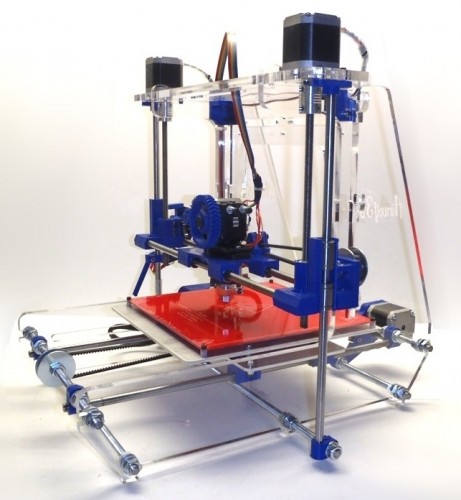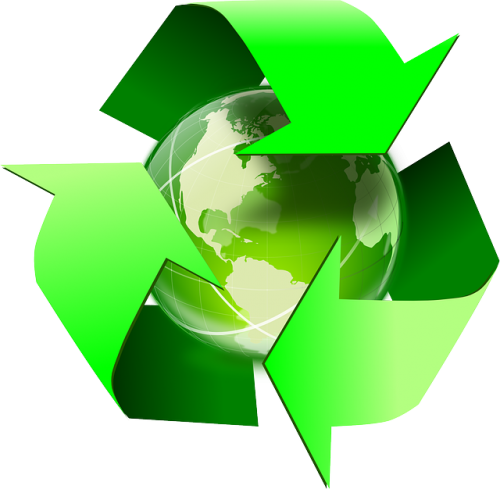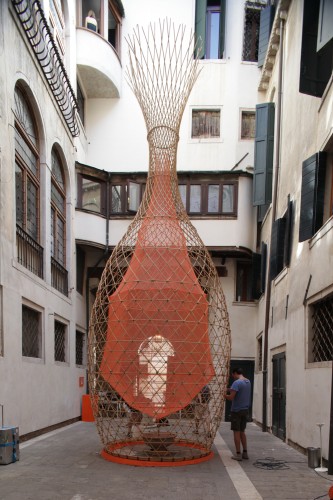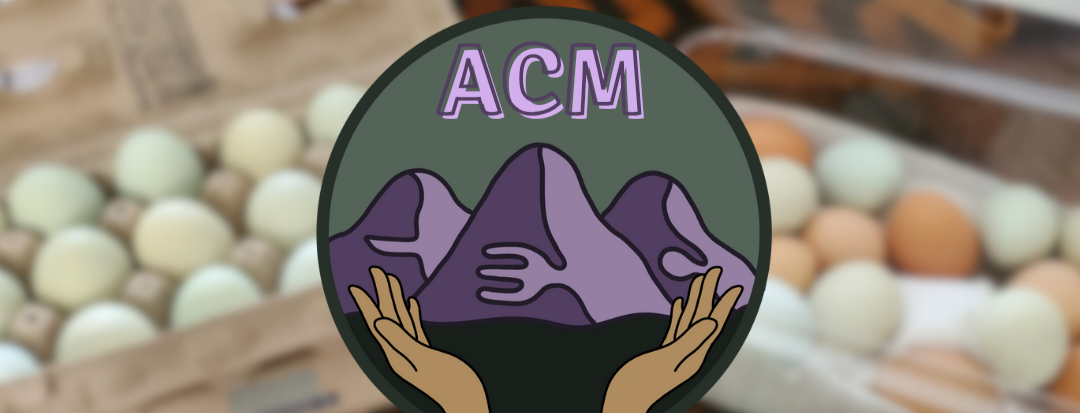 As more and more jobs are shed on a daily basis, it’s no wonder why an increasing amount of people are leaning toward the prospect of a moneyless society and resource based economy. Usually, as a general rule, we, as a society, are only presented with a problem when (and only when) the solution for that problem also exists. But in this case, many of the things actually causing the problems are also going to be the very same things that give us our solutions, as well. As more and more labor is replaced by robotics and automated systems, it will only become ever more increasingly apparent that we as a society will soon have a very large disconnect between our actual production capacity and the labor needed to produce those goods. Hence, if we are to avoid complete collapse of our system, we must leave some of our old ways of thinking behind and change our frame of mind from one of survival depending upon compensation for labor, to thriving upon the abundance of resources and goods we have created.
As more and more jobs are shed on a daily basis, it’s no wonder why an increasing amount of people are leaning toward the prospect of a moneyless society and resource based economy. Usually, as a general rule, we, as a society, are only presented with a problem when (and only when) the solution for that problem also exists. But in this case, many of the things actually causing the problems are also going to be the very same things that give us our solutions, as well. As more and more labor is replaced by robotics and automated systems, it will only become ever more increasingly apparent that we as a society will soon have a very large disconnect between our actual production capacity and the labor needed to produce those goods. Hence, if we are to avoid complete collapse of our system, we must leave some of our old ways of thinking behind and change our frame of mind from one of survival depending upon compensation for labor, to thriving upon the abundance of resources and goods we have created.
Here are just a few of the technologies that are either already producing this shift, or will greatly accelerate it in the years to come.
1. 3D Printing
 Most people have heard of 3D printers but as of yet not many have seen one in action or actually own something made by one because most of the machines are still a little bit too expensive for the average household to afford. Some of the cheaper models can go for as little as $600 and include some do-it-yourself-ing, while nicer pre-made desktop models like the Mojo can go for close to $10,000. Also, another barrier at the moment is that the filament used to make the products is still on the expensive side for the time being, but there are a few companies out there that are racing toward the finish line to get a filament on the market that is reasonable to afford, and once that happens, we will probably start seeing a lot more 3D printers on the market, and a lot more people printing their own stuff.
Most people have heard of 3D printers but as of yet not many have seen one in action or actually own something made by one because most of the machines are still a little bit too expensive for the average household to afford. Some of the cheaper models can go for as little as $600 and include some do-it-yourself-ing, while nicer pre-made desktop models like the Mojo can go for close to $10,000. Also, another barrier at the moment is that the filament used to make the products is still on the expensive side for the time being, but there are a few companies out there that are racing toward the finish line to get a filament on the market that is reasonable to afford, and once that happens, we will probably start seeing a lot more 3D printers on the market, and a lot more people printing their own stuff.
While it’s great for the people who own the 3d printers, this is going to put many, many people out of work in factories all over the world that produce things on a daily basis. Not only that, but many of the objects that will be printed will be open-sourced and not have any copyrights, which will have a side-effect of accelerating the development of open-source products of all kinds. This means that corporations will also incur a loss by not being able to collect a royalty off someone printing their own items much of the time, forcing companies to shed even more workers to keep profits up.
2. Contour Crafting
3D Printing on steroids, Contour Crafting is set to revolutionize the construction industry as we know it. No more taking months and dozens of workers to build a home. This bad boy can build an average family dwelling in less than 24 hours. The technology utilizes a machine that slides back and forth along rails, laying down layer after layer of quick-drying, fiber-reinforced concrete, complete with stackable electric and pluming components.
While the professor seems somewhat optimistic in the above video about how many jobs this would create, I have a feeling the millions of jobs this would eliminate would far outweigh the few that would rise in it’s place. And… just a note on what the professor said in the video above – do we really want our elderly out there printing houses in the construction industry? …Interesting thought.
3. ET3 (Evacuated Tube Transport Technologies)
This one’s about as big as Contour Crafting, except in the transportation industry. No more dangerous flights, traffic, traffic accidents, $4 per gallon gas (or more). No more breaking down along the side of the highway and nearly being hit by cars while changing a tire. No more oil changes, long highway road trips (unless you enjoy them, of course), buying a new car every 5 years. Goodbye smog, plundering our earths resources and causing environmental destruction beyond any rational consideration. Hello ET3.
Not only will ET3 get you around the world at up to speeds of 4,000 miles per hour (yes, we said 4,000), but it will completely eliminate nearly all other methods of long-distance transportation as we know it. Like a cross between a mag-lev train and one of those chutes that banks use to suck your money down the tube to the tellers from the drive-through, ET3 technology will rocket products and consumers alike around the globe, over land and water, with a fraction of the time, cost, environmental impact, and energy that we use today. Hemorrhaging a massive amount of jobs in the transportation industry will also be another effect.
4. Automated Driving
To give transportation workers a double-whammy and kick them while they’re down, automated driving will likely gobble up most of the remaining jobs in this industry once it becomes widespread within the next few decades. Between google driving your car via GPS and cars driving themselves with sensors, eventually, most people will probably not only not be driving themselves around, but they will also not even own their own cars. A subscription to a service with a fleet of automated vehicles that pick you up and take you to your destinations (or to the nearest ET3 station if you’re traveling long-distance) will most likely be the norm within many of our lifetimes.
5. Robotics & Artificial Intelligence
If google or your car driving itself wasn’t enough, now a robot can hop in and drive it, too. Robots are doing more and more things these days, and just when you think the next big innovation with robots is a long way away, you turn around and hear it on the news the next day. Robots can now assemble our cars, cook and serve our food, teach children computer-programming, and more. Combine that with artificial intelligence and the capability for them to learn over time, and there’s not much we can think of that a robot couldn’t possibly do in the future.
6. Open Source Software
 A little known aspect of the moneyless economy well on it’s way is open source technology. Open source software like Wikipedia has almost single handedly eliminated the paper-encyclopedia industry. Also, most people don’t even realize they already use some open source software, such as Mozilla Firefox, on a daily basis. Not to mention, more and more people are simply treating information as open source, to begin with, via the use of peer-to-peer technology like torrents, etc.
A little known aspect of the moneyless economy well on it’s way is open source technology. Open source software like Wikipedia has almost single handedly eliminated the paper-encyclopedia industry. Also, most people don’t even realize they already use some open source software, such as Mozilla Firefox, on a daily basis. Not to mention, more and more people are simply treating information as open source, to begin with, via the use of peer-to-peer technology like torrents, etc.
More importantly, this type of technology can give us great potential to work together and collaborate to develop the systems that we want. One Community Global has a massive open source blueprint project to develop sustainable communities. And New Earth Nation is developing an open source educational institute to construct a variety of educational materials accessible to the masses, for absolutely no cost whatsoever. Developments like these are catapulting us down the path toward a moneyless society, and there is no limit to where they can go.
7. Open Source Hardware
The next step after open source software is open source hardware. This goes hand-in-hand with technology like 3D printers but it’s so significant that it deserves a category of its own. When factories and large corporations are no longer needed to produce complex items that locally-owned 3D printers can manufacture, the need for these jobs will fade away. The most notable development of which will most likely be the open source vehicle, already well on its way, which will change the automotive industry forever and shake its foundation to the very core. This would also somewhat overlap with things like Outernet, which seeks to use satellite technology to make at least a portion of the internet free for everyone to use, worldwide, in tandem with constant developments via open-source software and information.
8. Internet of Things
While it may not seem like this one would shed as many jobs as the others, it is definitely a revolutionary system that allows every-day, household items to be controlled by and give feedback via the internet. This technology is going to allow computers to give and receive direct feedback with appliances and machinery, essentially cutting out the need for human calculation in many instances. This goes for things like traffic sensors, water distribution, energy consumption, the life of goods in general, and more. Eventually this technology will provide a “sea of data” that will make the calculations for distribution and synergistic working of many systems almost completely automated.
9. Automated Agriculture
 There definitely aren’t as many farmers as there used to be a few generations ago, but agriculture in the future is poised to go smaller scale and local, thanks to systems like the ones in development by Cyber Farm Systems and Farm Bot. Overlapping with both 3D printing and open source technology, the automated technology will be able to plant seeds, water, sense when fruits and vegetable are ripe, detect mineral composition, water saturation levels, apply organic methods of pest control, and more. If robots had thumbs, they would soon be green.
There definitely aren’t as many farmers as there used to be a few generations ago, but agriculture in the future is poised to go smaller scale and local, thanks to systems like the ones in development by Cyber Farm Systems and Farm Bot. Overlapping with both 3D printing and open source technology, the automated technology will be able to plant seeds, water, sense when fruits and vegetable are ripe, detect mineral composition, water saturation levels, apply organic methods of pest control, and more. If robots had thumbs, they would soon be green.
Also, in Taipei, they are already building vertical garden towers like the one you see in the picture above. Combined, when these technologies are done, you won’t even recognize our agriculture industry.
10. Waste Recycling
 Not just the waste recycling, but the automation of it, as well. As we make better use of our resources, waste them less, and develop automated systems for recycling and re-use, not only will more jobs be eliminated by automation, but there will also be less need for people to go out and secure fresh, new resources, as well. There are so many ways to recycle nearly all of the things that go down the trash, and even the toilet, that it’s ridiculous we throw away anything at all to begin with. From generating electricity with trash to using human waste to grow food and feed plants, there is practically nothing that we can’t reuse in some way, shape, or form. Literally, nothing goes to waste.
Not just the waste recycling, but the automation of it, as well. As we make better use of our resources, waste them less, and develop automated systems for recycling and re-use, not only will more jobs be eliminated by automation, but there will also be less need for people to go out and secure fresh, new resources, as well. There are so many ways to recycle nearly all of the things that go down the trash, and even the toilet, that it’s ridiculous we throw away anything at all to begin with. From generating electricity with trash to using human waste to grow food and feed plants, there is practically nothing that we can’t reuse in some way, shape, or form. Literally, nothing goes to waste.
11. Natural Systems Technologies
 Overlapping with the last category a bit, this is mostly technology that compromises simplicity and the natural workings of biology and science. Elegant, yet stunningly simple designs like the Warka Water Tower can pull water out of thin air. Other systems like Aquaponics would overlap into this category, as well, recognizing the natural, symbiotic relationships that are created when your fish feed the plans, which in turn clean the water for the fish, and so on and so forth. As we work to derive ever more clever and simple ways of dealing with the limited resources in our environment, more systems and products like this will come about, eliminating the need for many complex, labor-intensive processes.
Overlapping with the last category a bit, this is mostly technology that compromises simplicity and the natural workings of biology and science. Elegant, yet stunningly simple designs like the Warka Water Tower can pull water out of thin air. Other systems like Aquaponics would overlap into this category, as well, recognizing the natural, symbiotic relationships that are created when your fish feed the plans, which in turn clean the water for the fish, and so on and so forth. As we work to derive ever more clever and simple ways of dealing with the limited resources in our environment, more systems and products like this will come about, eliminating the need for many complex, labor-intensive processes.
12. Bitcoin
 While bitcoin may not be the epitome of a moneyless society, it certainly is a step in that direction. Bitcoin is a revolutionary technology that allows consumers to literally bypass banks when making transactions. While still in it’s infancy, and recently plagued by spectacular gains and crashes, the concept of bitcoin is revolutionary because it tells us that we really don’t need the banks to hold our money for us, and ultimately, as long as it doesn’t fail catastrophically (which at this point no one is really sure it won’t) it will trim a few jobs off of that sector, as well.
While bitcoin may not be the epitome of a moneyless society, it certainly is a step in that direction. Bitcoin is a revolutionary technology that allows consumers to literally bypass banks when making transactions. While still in it’s infancy, and recently plagued by spectacular gains and crashes, the concept of bitcoin is revolutionary because it tells us that we really don’t need the banks to hold our money for us, and ultimately, as long as it doesn’t fail catastrophically (which at this point no one is really sure it won’t) it will trim a few jobs off of that sector, as well.
Yes, bitcoin is still a currency and by some definition may be considered money, as well, but a technology as revolutionary as this, that decentralizes our methods of exchange away from the clutches of corporate conglomerates that currently control them, still pulls us in the direction of becoming more self-reliant as individuals, and as a byproduct, also eliminates yet even more jobs, consequently pushing us even further in the direction of a moneyless society.
So in the avalanche of jobs we will be losing, at least there will be the silver lining with the technology to take us out of the pits of despair that it may leave some of us in, but it will do so only if we choose to utilize this technology properly. It’s up to us to implement the technology and systems to our advantage, and bring about a new way of thinking, an Integral Worldview, to move beyond our current problems, and design the systems that will bring greater levels of enjoyment and prosperity to all on this planet. We can always choose how we play the hand we’ve been dealt. Our technology can be our greatest asset or our ultimate demise. The choice is ours.
Can you think of any other technologies that I missed?


